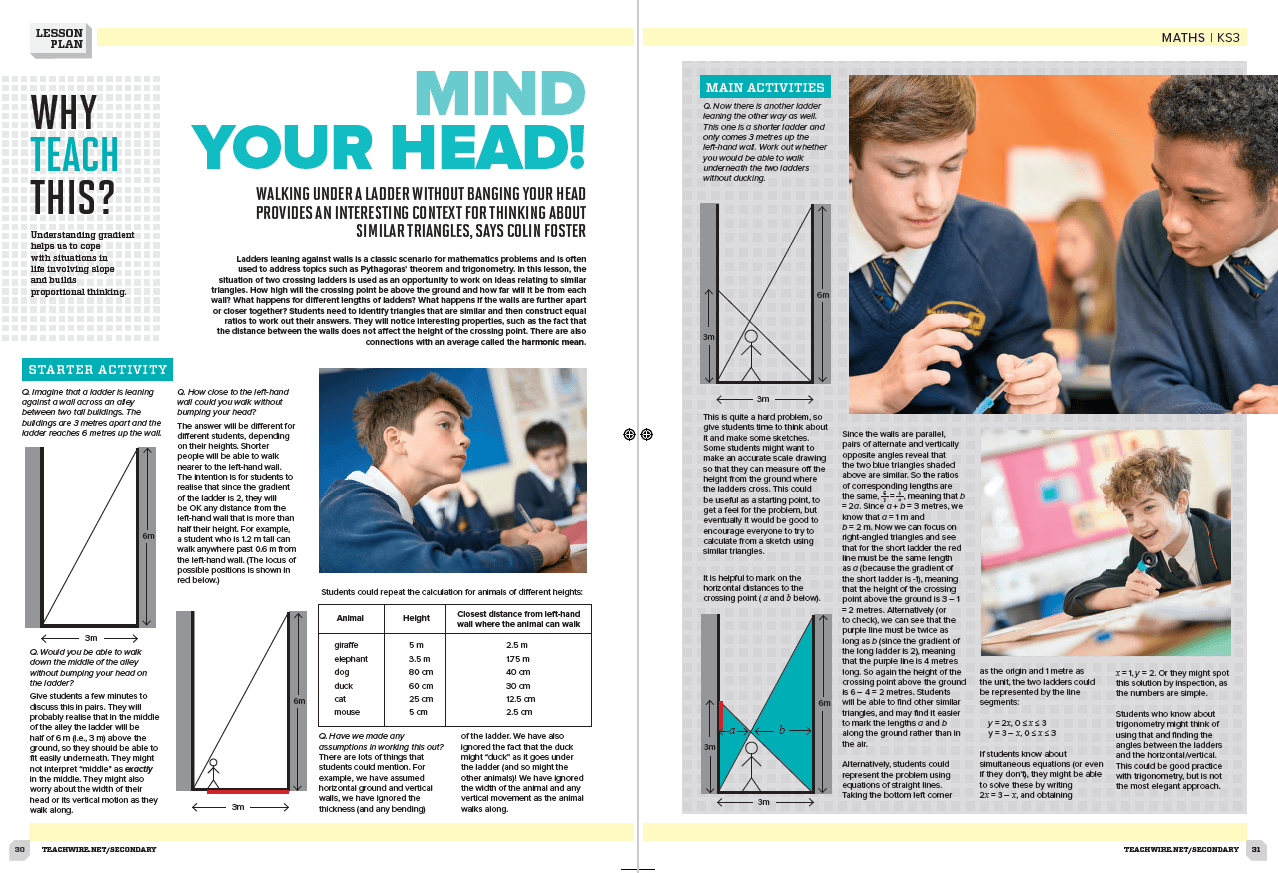Ladders leaning against walls is a classic scenario for mathematics problems and is often used to address topics such as Pythagoras’ theorem and trigonometry.
In this maths lesson, the situation of two crossing ladders is used as an opportunity to work on ideas relating to similar triangles.
How high will the crossing point be above the ground and how far will it be from each wall? What happens for different lengths of ladders? What happens if the walls are further apart or closer together?
Students need to identify triangles that are similar and then construct equal ratios to work out their answers. They will notice interesting properties, such as the fact that the distance between the walls does not affect the height of the crossing point. There are also connections with an average called the harmonic mean.
For more Colin Foster geometry and measures lesson plans click here.











